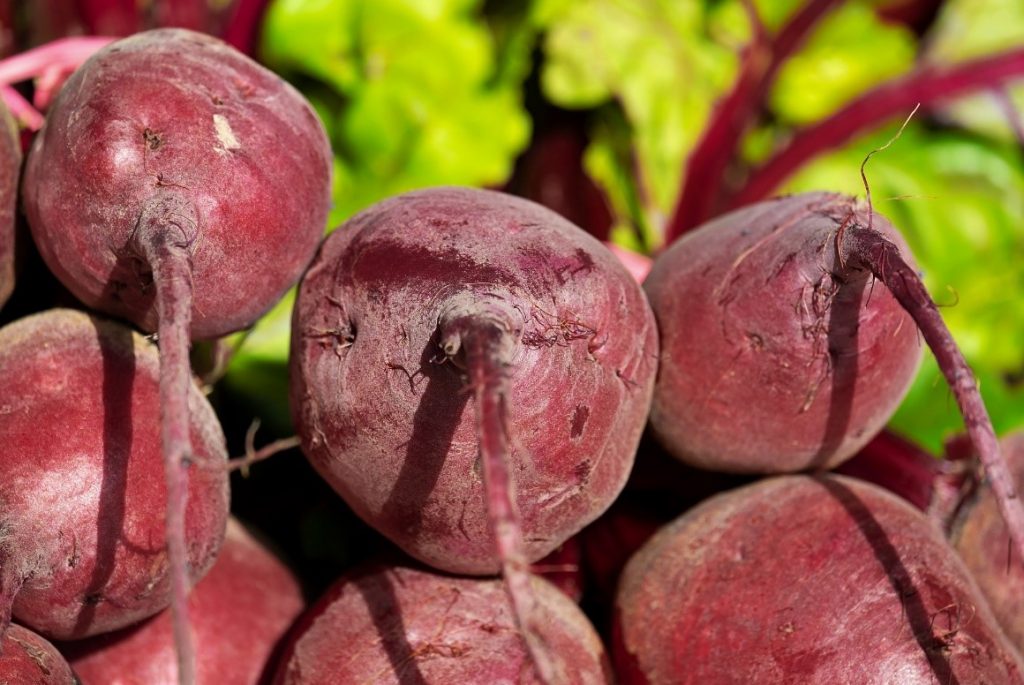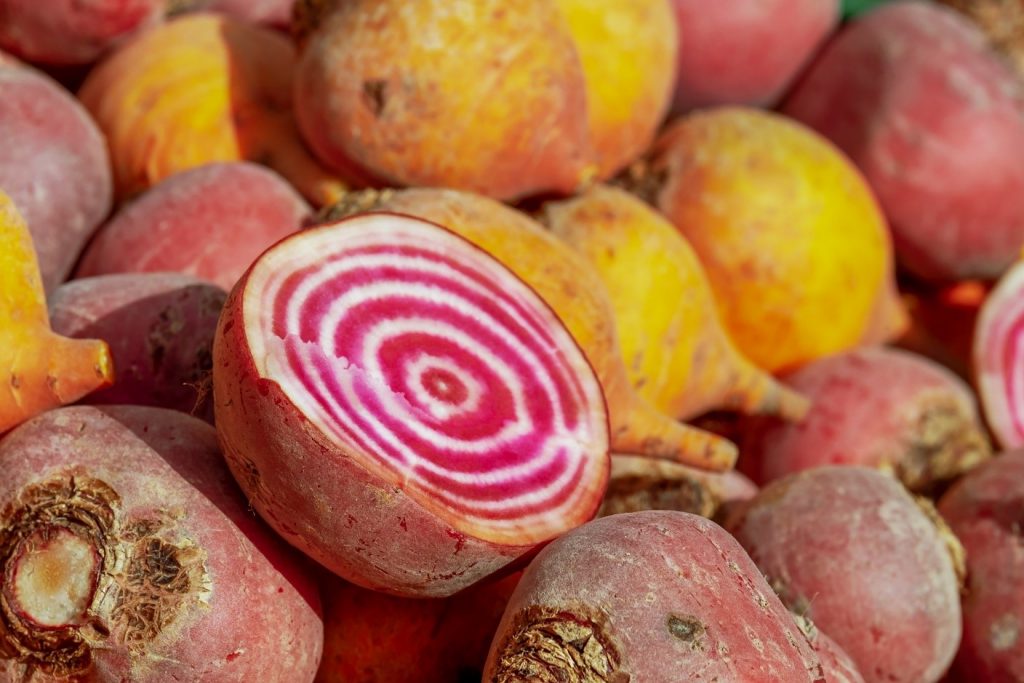Beets (Beta vulgaris) are root vegetables with edible roots and leafy tops. Attached to the beet’s green leaves is a round or oblong root, the part most people think of when they hear the word “beet.” Beets belong to the same plant family as Swiss chard and amaranth, and their edible leaves share a resemblance in look, taste and texture. Although typically a reddish-purple hue, beet roots may be white or golden in color, or striking multi-colored variations.

Selection and Storage
Fresh beets are available in Colorado from early July through September. When selecting beets, look for:
- Smaller beets tend to be sweeter and more tender.
- Beet greens should look fresh and a bright, deep green color. Avoid leaves that are wilted, limp or turning yellow.
- When storing, avoid using cracked or damaged beets.
Store unwashed beets in a plastic bag in the refrigerator, where they will stay fresh for up to 3 weeks. Wash well with a vegetable scrubber under cool running water just before using.
If cutting greens off of the beet root, leave at least 1 inch of the stems attached to the root to minimize color bleeding. Unwashed greens should be stored in a separate plastic bag in the refrigerator and used within 4 days; wash well with cool running water right before using.
Did You Know?

Sugar beets have a long history in Colorado agriculture. The first Colorado sugar beet processing factory was built in Grand Junction in 1899. By 1906, factories had been constructed in many Colorado cities, including Rocky Ford, Loveland, Greeley, Fort Collins, and Longmont. The beet sugar industry contributed to increased land values, population and urban growth, and stimulated a more diversified agricultural culture. During the 2014/2015 growing season, 29,600 acres of sugar beets produced 917,000 tons of beets!
Sweet Beets!
A belief persists in many cultures that if a man and a woman share the same beet, they will fall in love.
Preserving Beets
Refer to the following CSU Extension fact sheets for information and recipes on preserving beets:
Beet Hummus
Ingredients:
2 cans
(15 oz.) Garbanzo beans
2 small cooked beets, skins removed
1/3 cup sesame tahini
1 lemon, juiced (appx. 3-4T)
2 cloves garlic, minced
2 T apple cider vinegar
1/3 cup olive oil
Salt and/or pepper, to taste
Fresh, chopped herbs (optional)
Directions:
- Drain and rinse garbanzo beans.
- Cut beets into smaller pieces.
- Add all ingredients to bowl of food processor. Blend until ingredients are combined, stopping to scrape down sides, as needed. (Can add up to 1/3 cup water, until desired consistency is reached.)
- Transfer hummus into a serving dish and drizzle with olive oil and/or garnish with chopped herbs, if desired.
- Enjoy with pita chips or crackers and your favorite fresh vegetables!
Nutrition

Both the root and the greens of beets are very low in calories and add a nutrient-packed punch to any meal. Beet roots are a very good source of manganese, potassium, and iron, and an excellent source of folate. Folate and folic acid have been found to prevent neural-tube birth defects and protect against heart disease and anemia.
Beets are also high in both soluble and insoluble fiber. Insoluble fiber helps to keep your intestinal track running smoothly and soluble fiber helps to keep your blood sugar and blood cholesterol levels on track.
The unique crimson-red color of red beet is primarily due to betalain pigments. Betalains are antioxidant, anti-inflammatory agents found in higher levels in beets than other plant foods.
Don’t Toss the Greens!
The greens attached to the beet roots are delicious and can be prepared like spinach or Swiss chard. Beet greens contain more minerals, vitamins, and fiber than the beet root (except for folate), and are low in calories, fat and sugar. Both raw and cooked beet greens are an excellent source of vitamin A and vitamin K.
Beet greens are mostly green in color; however, the veins in beet greens tend to take on the color of their root. Greens from yellow beets have vibrant yellow veins and beet greens from red beets have rich red veins!


